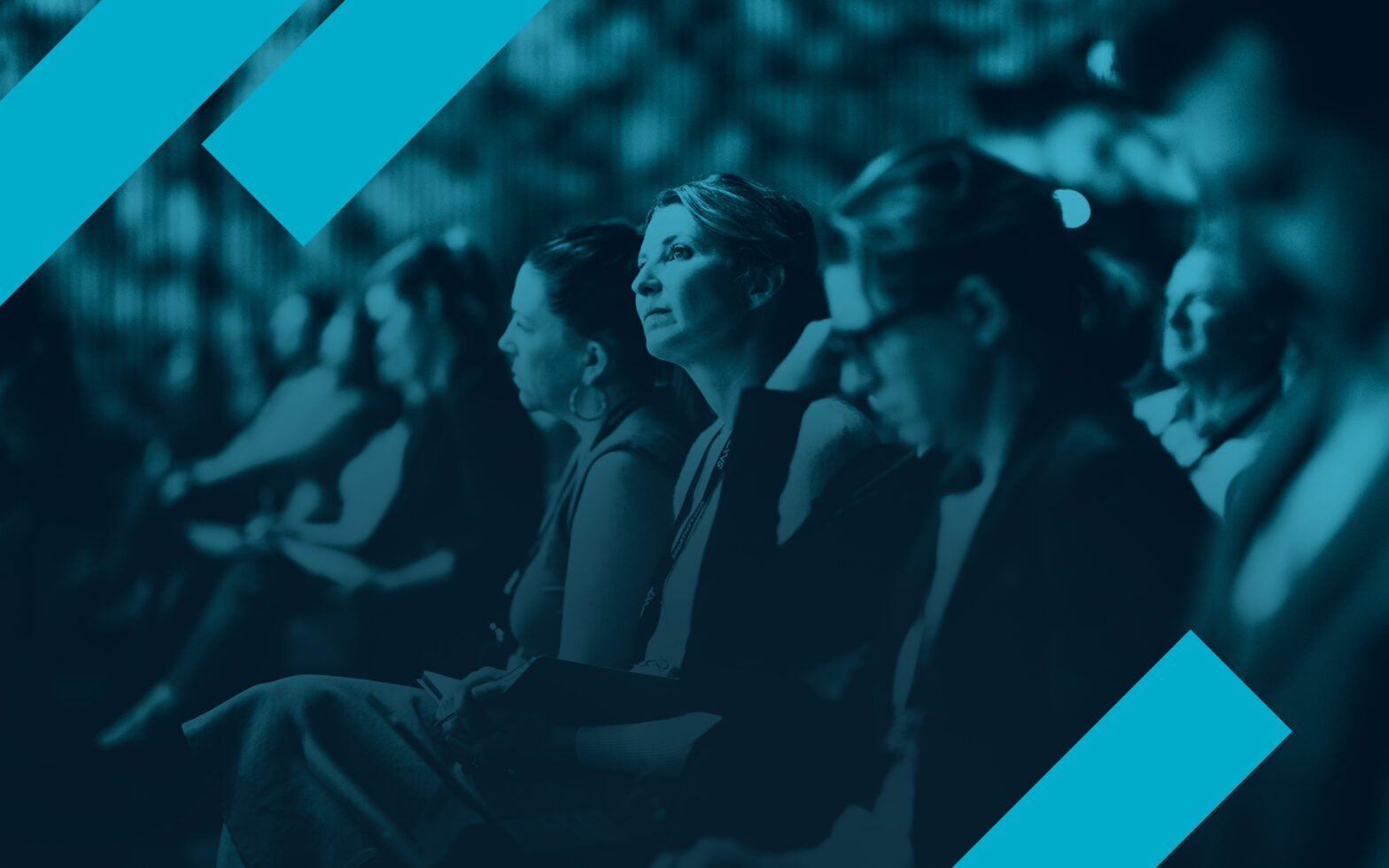
SPORTNXT: DAY 1 LIVE BLOG
28 Mar 2023
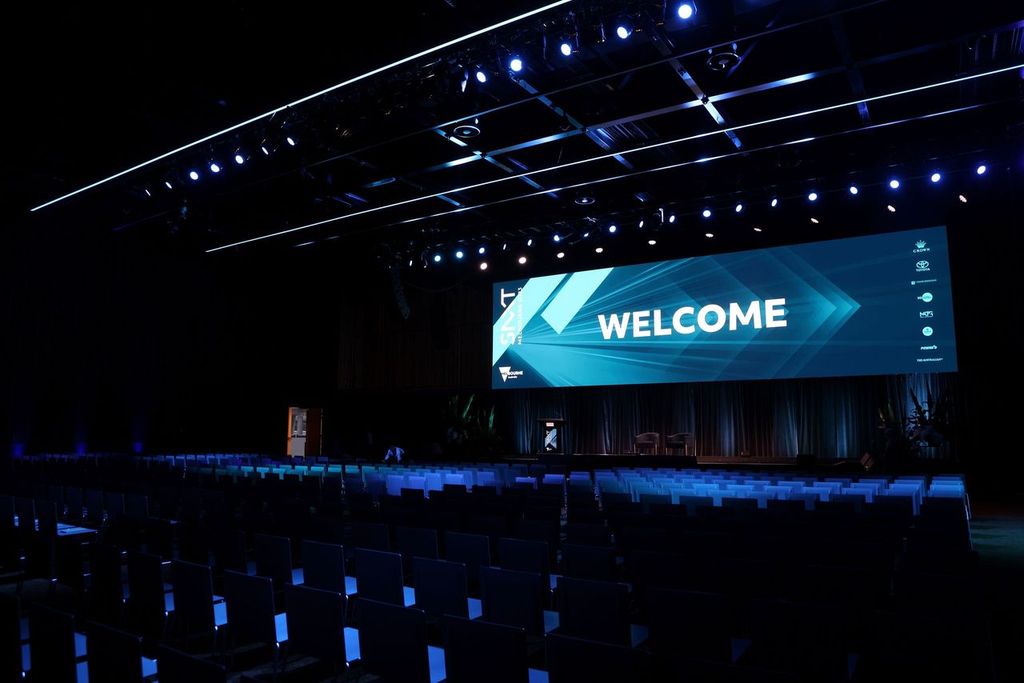
Welcome to SportNXT 2023
As the delegates gather at Centrepiece, Hamish McLachlan, Master of Ceremonies, welcomes attendees from all across the sporting world.
Delegates are welcomed to country by Aunty Joy Murphy, paying respects to the Wurundjeri People, whose land this summit takes place on.
The Hon. Steve Dimopoulos MP, Minister for Tourism, Sport and Major Events, speaks on Melbourne’s hold as a leading centre for events in Australia and across the globe, and emphasises the commitment and investment from the Victorian Government to growing sports through inclusion.
“For us it’s about assets, people and inclusion”
The Hon. Steve Dimopoulos MP
SportNXT Chairman, Eddie McGuire AM, addressed the crowd on the importance of sport and entertainment for all nations and cultures.
“What we need to do is come with the inspiration, so in 170 years they say “wow, they really changed things with SportNXT”.
Eddie McGuire, AM
On the future look of sports, McGuire speaks on how technological advancements and increasing gamification are changing the spectator’s experience–whether they’re at the stadium or on the sofa at home.
Keynote with Robyn Denholm – The New Normal
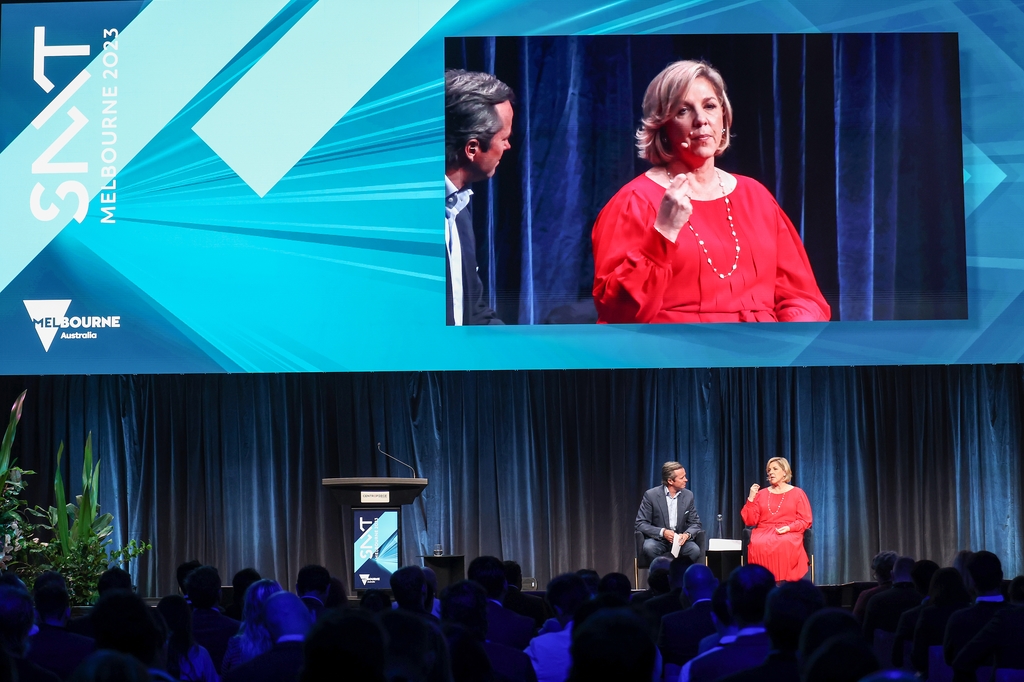
Robyn Denholm, a self-described ‘technology optimist’, addresses the delegation at Centrepiece in her keynote speech. For Denholm, sport is weaved into Australia and a part of our national identity, and she highlights how, growing up as a child of immigrants in Australia, sport was the great cultural equaliser.
Female role models were often sports people when Denholm grew up, however female professional sportspeople were a rarity. Denholm acknowledges the growth of women’s sport and the increasing recognition of women’s sport by big business, sponsors and governments. Some of the biggest lessons we apply in business were learned in sport.
Denholm hopes the principles of heroism, sportsmanship and respect aren’t lost as business chases growth and profits.
“Over the last 10-15 years we’ve seen these amazing innovations in sports building the opportunities for female athletes.”
Female professional athletes are now attracting significant audiences and attracting record-breaking audience’s week after week said Denholm.
Looking to Melbourne, Denholm recognises the record Women’s NBL attendance records and the FIBA Women’s Basketball World Cup having a record attendance when held in Sydney.
The Technology leader recognises the impact made by Sam Kerr, who was placed on the front cover of the $1.8 billion dollar game franchise, FIFA–the first time in the game’s history that a woman was placed next to a male counterpart.
Denholm says the compression of valuations and global interest rate increases have global impacts on businesses but also on consumer spending. The countries and companies that continue to focus on innovation across the economic cycle will see the dividends in the long run, the Tesla Chair says.
Denholm’s own 30 years of experience has found that technologies that focus on key tech trends prior to down turns perform strongest coming out of these external pressures, often “slingshotting” as spending recovers.
“Sport must resist the temptation to innovate without consideration for its number one stake holder – the fans”.
Denholm acknowledges the increase in school performance, attendance, general health, confidence, self-esteem and lowered levels of depression for women and girls who play sports.
“The old adage of “you can’t be what you can’t see” rings true to me. Girls and women today are very lucky to have some amazing role models to look up to.”
Denholm doesn’t think it’s yet appreciated that many of the biggest tech companies in Australia are led by women.
“We must be more ambitious with our women, we want parity, we want equality, we know the business case exists. We need to make sure we open up sports, so they are a place for women to grow and prosper.”
“Ultimately, our investment now will ensure more girls gain the skills needed to thrive in the modern Australian workforce, and that is a situation where we will all ultimately benefit.”
When asked about her ownership of the Sydney Kings and Sydney Flames basketball teams, the Tesla Chair speaks to her love of all sports, but how she had always held a lifelong passion for basketball.
The State of Sport
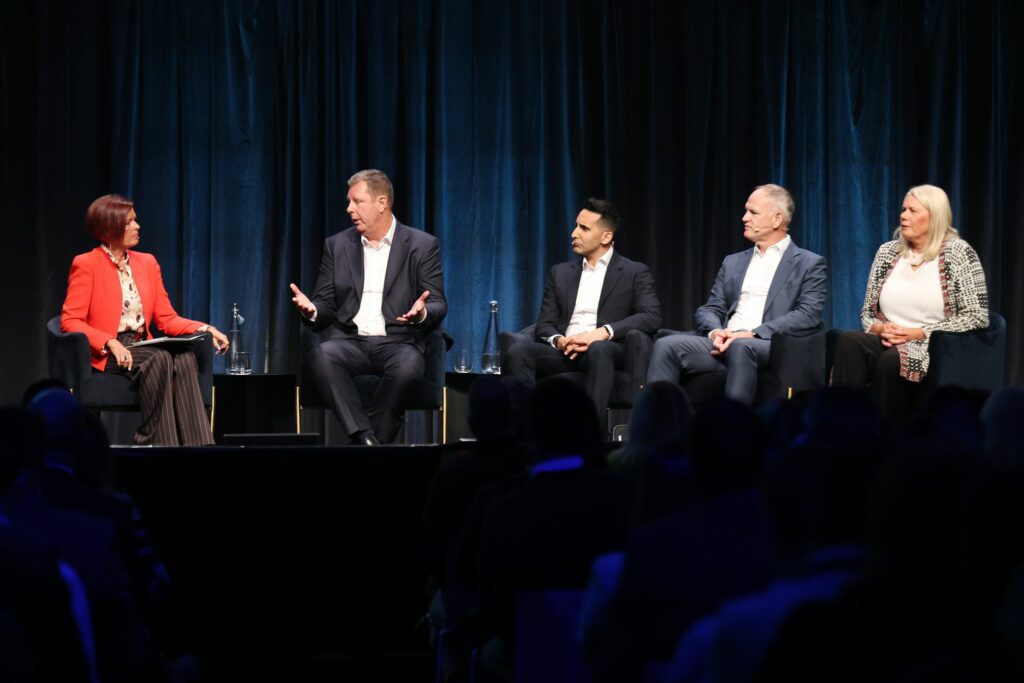
A panel of globally recognised leaders chime in on the state of sport both in Australia and globally. Moderated by ABC’s Tracey Holmes, the panel includes ICC Chair Greg Barclay, NBA Asia Managing Director Ramez Sheikh, News Corp Executive Chairman Michael Miller, and President of Melbourne FC Kate Roffey.
Michael Miller says that, while the ‘pie’ for sport isn’t growing, the Tier One sports are taking a bigger piece and making it harder for the second-tier sports to compete.
Kate Roffey calls on the fans, and in fact, all people to engage with sports. Roffey emphasises that if you’re worried about community sports or women’s sports growth, then do something about it, watch and get involved.
Ramez Sheikh responds to a question on the focus of fandom and meeting fans where they are. “Basketball in Australia is the number one sport in participation. We’re really grateful for that, and we don’t take that for granted”. NBA Asia is focusing on how to make a fan, and keep a fan, on scale a process he says is complex.
Greg Barclay was talking the growth of cricket as a wholistic game for women and men not separated sports. “This is a deciding moment, we will look back at this and say this was a pivotal moment for the game, said Barclay on the Indian influence on cricket.
For the cricket market in the US, Barclay says the growth of the sport has been a top-down approach, as opposed to the usual grassroots approach.
Michael Miller acknowledges how the way people watch sport ahs changed, with spectators less likely to go to a game and more likely to watch short snippets, focusing on the stories behind the game. “One of the challenges we have in women’s sport in Australia is getting women to watch women’s sport … 2/3 female sport spectators are men, whereas for men’s sport it’s closer to 50/50.”
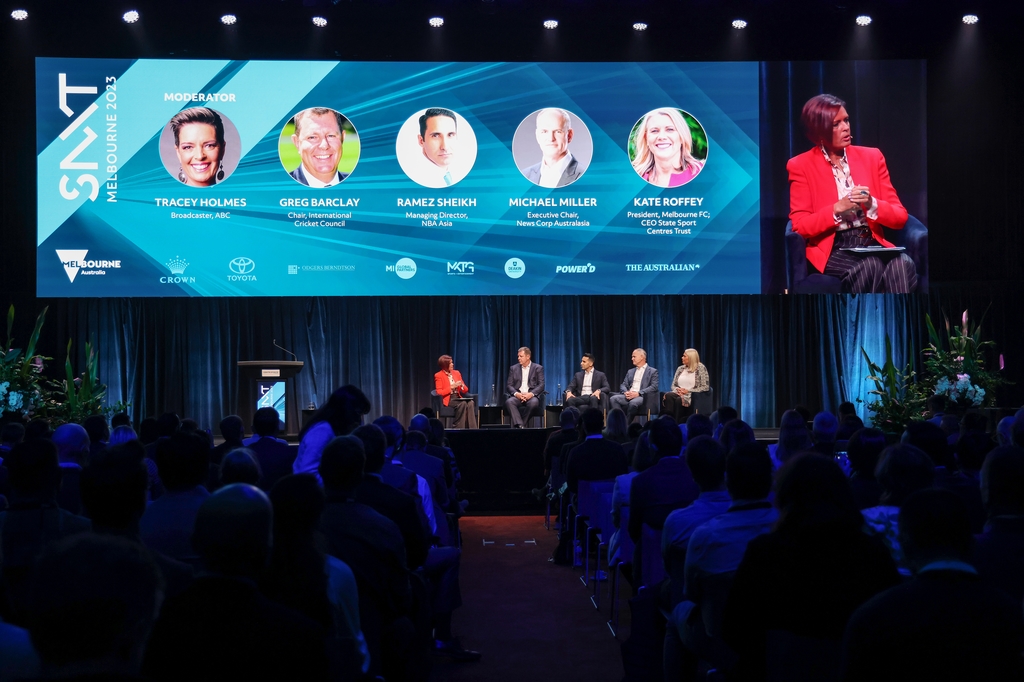
Miller also commented on athletes involving themselves politically or on social topics at the expense of the brands and leagues they compete for: “Their pay isn’t going to suffer, but fundamentally the grassroots and sport will suffer from the effect.”
Kate Roffey says engaging with the team as people, and understanding the players’ values but also as a club representative and if there were a situation where a player took a very strong stance on a certain topic, they would have a robust conversation about it. “You are not going to please everyone, but you can act in everyone’s best interest.”
Ramez, the Managing Director of NBA Asia, talks to the importance of creating an environment of diversity, safety and inclusion.
In response to the geopolitical shifts in Afghanistan and the affect on the Afghanistan women’s team, Barclay said the ICC board bought into helping Afghanistan grow cricket both men’s and women. Barclay acknowledged the complexity of situation and the decision of the ICC to support the cricket board, not going into detail he said, “there are steps in place to help the Afghanistan women’s team, but it’s an issue where it is almost impossible to please anyone.”
Kate Roffey said that football is strong in attention and viewership, but isn’t where it needs to be in terms of game-day engagement and technology. Part of the broadcast issue for women’s sport is the broadcast quality. “Although I’m the biggest fan of women’s sport, I often find I can’t even watch it because the quality of broadcast is so poor”.
From the perspective of the Managing Director of NBA Asia, “Australia is in, or entering, the golden age of basketball…. as a business, Australia is our number subscription market for our league pass”.
From an international basketball and general perspective, Ramez acknowledges the strength, appetite and fandom for sport. Ramez says that it leaves them quite “bullish” about the Australian market and looking to continuing involvement. In his view, it’s an 8.5/10.
Regarding the state of cricket, Barclay sees a lot to look forward to going forward, with a huge base of young fans and many opportunities in technology, he is optimistic for the future.
Michael Miller said the Giants and Suns are going backwards, and no one is doing anything, he says cricket is performing well on an international level, but the grassroots structures are dwindling.
In the NewsCorp Executive Chairmans view, the pie isn’t big enough for them to take it all. Further, he believes that there is not the coordination that is needed at the top tier amongst Australian sports codes. “The sports that create interest, are the ones that make it competitive, that give you access to the stories… it’s those who spend that get our attention ultimately… it’s not the media or broadcast that decide that, it’s the fans that do that.”
“We need to understand those deep niches we need to own… with a population of 25 million we can’t compete in them all” said Miller.
Keynote with Chatri Sityodtong – Breaking Through
The CEO and Founder of ONE speaks to a full room after the morning break.
Chatri reflects first on his early life, when his father went bankrupt and abandoned his family, leaving them in poverty. He says this taught him so much of what he now knows–especially that material possessions don’t define a life.
When asked if, without his experience in his youth, he believes that he would’ve achieved the same success, Chatri isn’t sure. Although the lessons of his youth taught him a lot and stay with him today, he believes that “he would have found meaning and purpose” regardless but potentially with less drive.
“Every human being can find his or her passion, but it requires a lot of introspection, self-reflection and intellectual honesty.”
“Ever since I was 13, I have been doing it now for 38 years straight, martial arts is my greatest passion, I want to unleash greatness on the world through martial arts.”
“I never thought we would be top five in the world in the Nielson Top 10 Sport Properties”
Chatri has also been congratulated for his new deal with 7+ and One media, placing their content on the 7 platform in Australia.
“When I went to Harvard, I was the poorest kid by far, [….] my mom was living in my dorm room.”
Chatri managed a 500-million dollar fund at one point, but found the allure of societal definition of success, in pursuit of material gain wasn’t aligned with his own love. He made the choice to chase a passion that aligned with his values.
“Sometimes the happiest times in my life were sitting on the floor eating one meal with my mum, because it was pure and real”
The driven founder and CEO says that starting ONE Media was a risk–but a smart one. He looked at the market, and had found that there was no main martial arts flagship media establishment in Asia. Focusing on values and human experiences with the brand and product, Chatri found great success in uniting the 4.2 billion people within Asia who are his primary targets. He makes it clear however, that ONE Media isn’t slowing down–the rest of the world is the next step, and ONE is already in 179 countries.
Chatri is driven by the ability of ONE to inspire the fans across the world who watch.
The first few years of ONE were a complete disaster according to Chatri, he travelled the world pitching his idea and was told “it’s a stupid idea”. Chatri remembered a particular moment of being kicked out of an office 5 minutes into his pitch.
For Mr Sityodtong, he believes both his poverty and unbreakable martial arts spirit gave him the strength to push through. “Entrepreneurship is the hardest way to make money… 97% of startups fail in the first three years … if you’re doing it for money you’ll quit when its hard and you’re not making money”
Chatri experiencing three years of business disasters, had no end in sight, but he’d “rather risk living my dream than be guaranteed success by society, I wanted to live my life.”
Women in Sport: Views on Performance
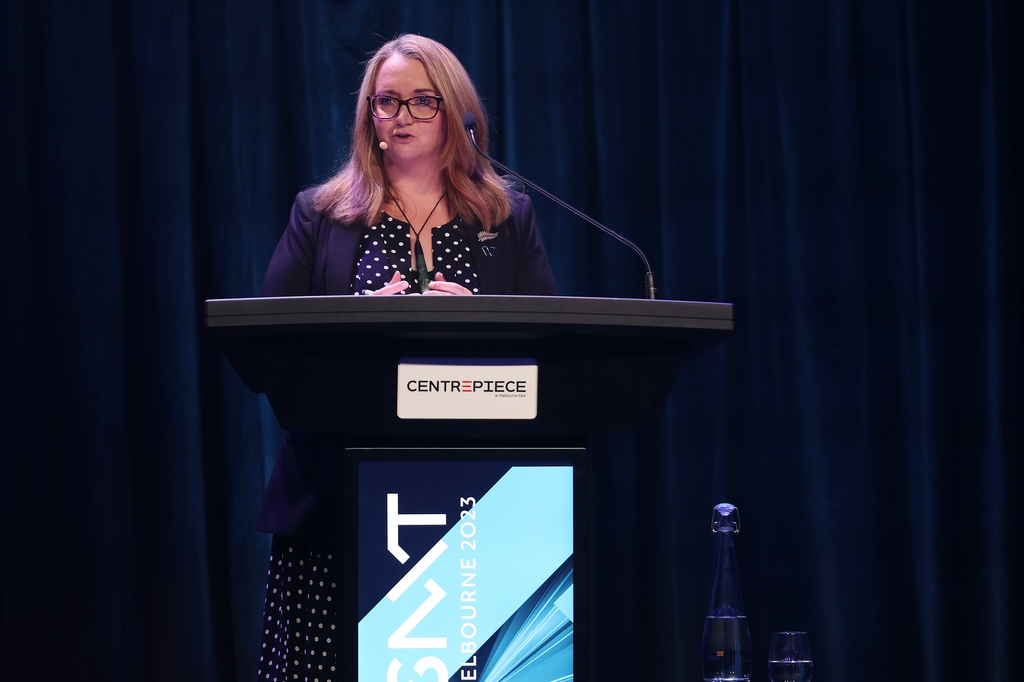
Rachel Froggatt, International Director at Away We Go, emcees a panel consisting of Nick Hockley ( Cricket Australia), Kate Jones (ARLC), Amanda Laing (Foxtel) and Sarah Walsh (Football Australia). The panel focuses on the realities of growing, accelerating and maintaining women’s sport.
Sarah Walsh says the Women’s World Cup will have two billion viewers, and 1.5 million attendees. Football Australia is lobbying FIFA in order to move the stadiums for the Australian’s first game to a larger stadium due to such high demand for tickets to the opening Matildas game.
“We shifted our business around the Matildas, we wanted to grow and fast track that growth sustainably for our Matildas and football overall”
To commercialise the band as a property, the onfield performance is key. But it’s imperative that the off-field partnerships are also prioritised–they need to be aligned with the team and its values, deeper than just being a “name on a jersey”.
Nick Hockley recognised the great growth and electric environment the Women’s World Cup has had previously and will improve on moving forward.
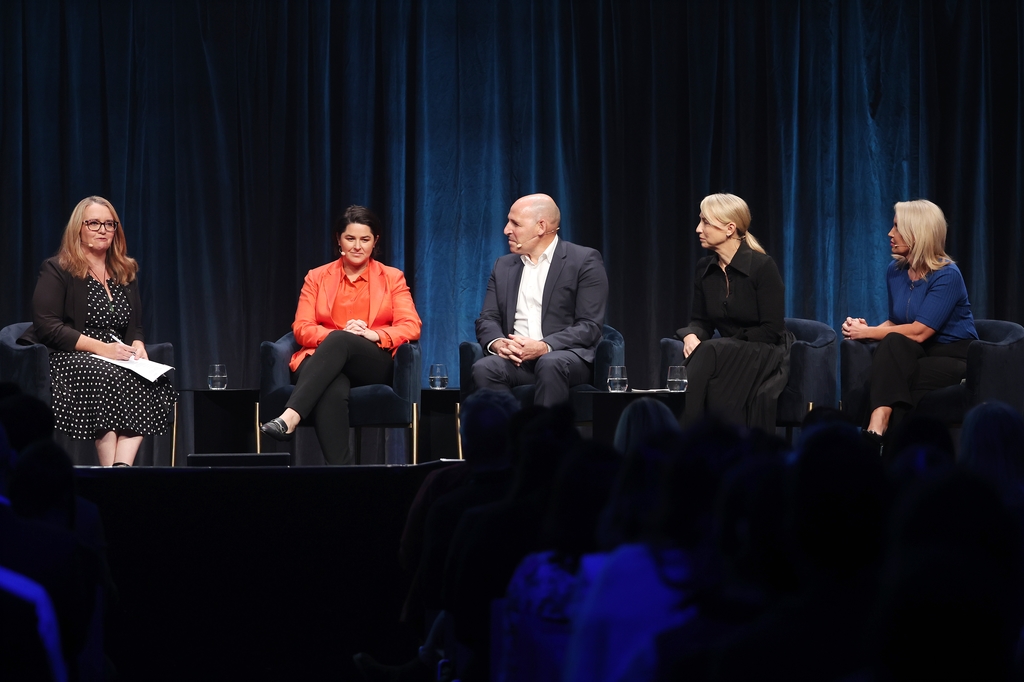
Amanda Laing sees Foxtel and Kayo as key broadcast partners. Laing highlights how the networks empower women’s sport, addressing how one of the greatest keys for women’s sport is to get it on screen. “Get more women on screen talking about sport, not just women’s sport.”
The sponsorship and ad dollars have not matched the rise in popularity of women’s sport, says Laing, but the value is still there. It just represents itself in different ways, and this value needs to be found and exhibited.
Kate Jones says the best way to encourage diversity in sport is to have “diversity in the room”. Diversity and inclusive plans need to be created from environments that reflect the goal, says Kate.
Nick Hockley says Foxtel and Kayo insisted on airing every single WBBL game, something at the time CA didn’t make contractually mandatory. “We invested millions and millions into that Women’s World Cup with a long time vision”
Hockley thinks it’s “investing in the top, investing at the bottom, even when times get tough … it’s not just money, it’s time and focus”
Laing acknowledges that demand will not grow of it’s own accord and that, instead, sports leaders should “build it and they will come.”
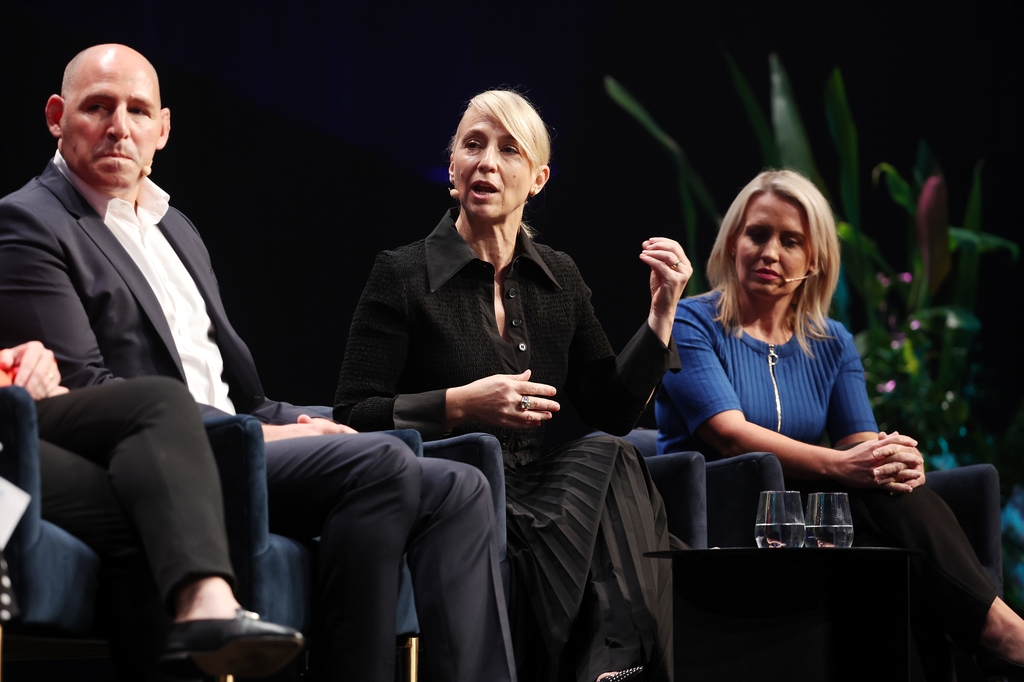
Kate Jones says that if she could deliver pay parity for female athletes tomorrow, she would. The Rugby League Commissioner believes that growth in the pathways, and having a clear plan to navigate barriers, is imperative to creating the change you want to see.
Long-term ROI is key, says Nick Hocklely, so invest and have a long ROI horizon.
Mel Jones OAM said the spends should also be scrutinised, to make sure the money is serving the intended purpose with a goal in mind.
The Foxtel CCCO said that Foxtel’s FoxSquad initiative aims to involve women in the making of broadcast sports. The group “keeps the metrics scrutinised” leading to direct pay equity. Further FoxSquad “celebrates when you’re doing something right and calls it out when we’re not”. The importance of making the cultural values clear on screen is important to Laing and the Foxtel internal community.
From the CEO of Cricket Australia, the importance of small things as well as larger issues, ensuring employee engagement is equal across genders and having a clear plan to combat historical points of inequity, are all significant. “Small things matter” he said.
“Sport, innately in my view, is a human right” says Sarah Walsh.
“We need to continue to take up the speed of change and our girls and our boys deserve that” says Kate Jones.
With football merchandise sales in stadiums four times higher than any other national team, it’s imperative that we think about how we licence our merchandise according to Sarah Walsh. She welcomes trying new things, like having The Wiggles perform at a AUS vs USA game. “One of the major challenges for the Matildas is having players all over the world. During COVID-19 one player didn’t met her daughter for 7 months due to having to play overseas.”
Kate Jones says, “if the Paralympic games aren’t the most inclusive games we’ve ever had, then we’ve failed.”
While it isn’t as necessary in established men’s sports, finding new ways to shoot sport to show female athletes at their best, to make it more bespoke, and make sure you introduce the viewers to the athletes, is key for women’s sports according to the Foxtel CCCO.
“The hope is that cricket and all sport is super relevant and a real force for social cohesion. I think Australia is–I hope–leading the way” says Nick Hockley.
Sarah Walsh says “We are currently leaders in sport globally and we need to keep working to keep it that way. Our stances on pay equity aren’t happening everywhere, we are leading.”
“There are so many more reasons than mental health and diabetes that attract people to sport, we need to bring more data to what sport can help people do” said Amanda Laing.
Keynote with Roger Goodell
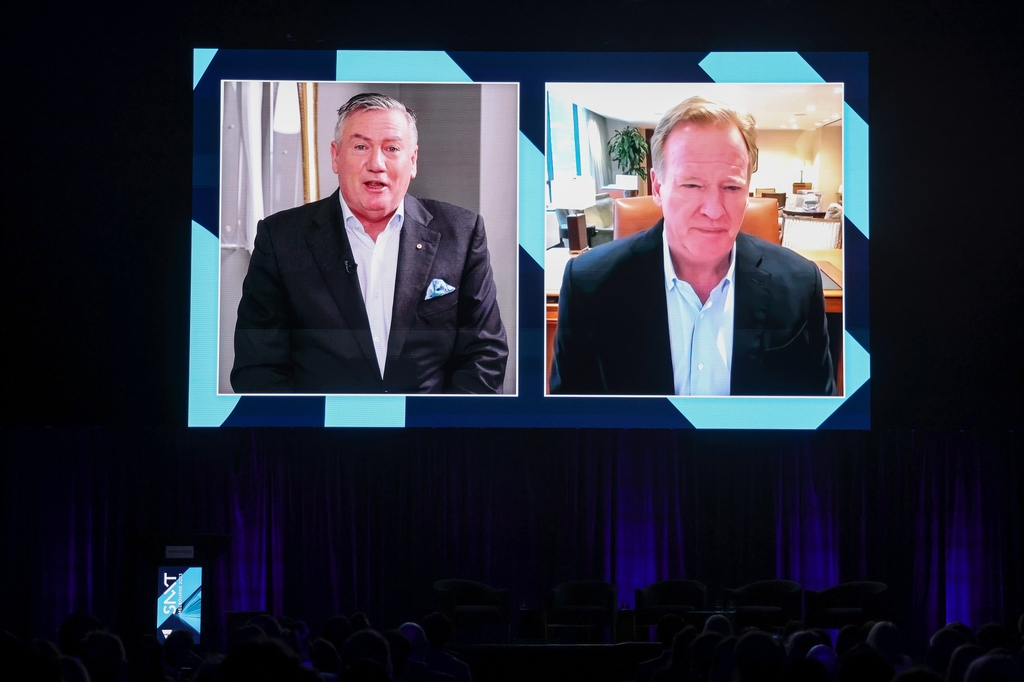
Eddie McGuire speaks with Roger Goodell, NFL Commissioner, acknowledging another successful year of football gone and looking ahead to what comes next for the league.
“We don’t want to become a studio game. We saw that, during COVID when you didn’t have fans in the stadium, it’s a different experience. The fans are a big part of that. We say we want someone in every seat in the NFL and we work very hard to do that.”
While most NFL fans don’t make it into the stadium, Goodell says the fan energy in the stadium is crucial to the overall experience and the excitement is a part of the broadcast.
In some cases, communities really want outdoor experiences, having experiences that reflect their community and climate. The NFL wants to bring that technology in to improve the experience for all the fans.
“We don’t want our fans to disconnect from the outside world when they come into our stadium. We’re bringing in Wi-Fi and very low latency data and video, so they really have everything they have at home–but better, because they’re experiencing it with everyone else.”
“We feel like we have an opportunity to bring people together, bring a country together and, in many ways, bring the world together through our game”.
Having a limited number of games helps to make sure that every weekend is an event, and Goodell considers this a great advantage to the NFL.
Having started as an intern at the NFL, he has spent a considerable amount of time working with the broadcast side of the game.
“It’s really about recognising the platforms that are going to reach the largest amounts of fans”
The key considerations with broadcast partners are: is the audience there, can they help each other grow, and can streaming partners offer a more interactive experience instead of the one-way relationship of traditional broadcasting?
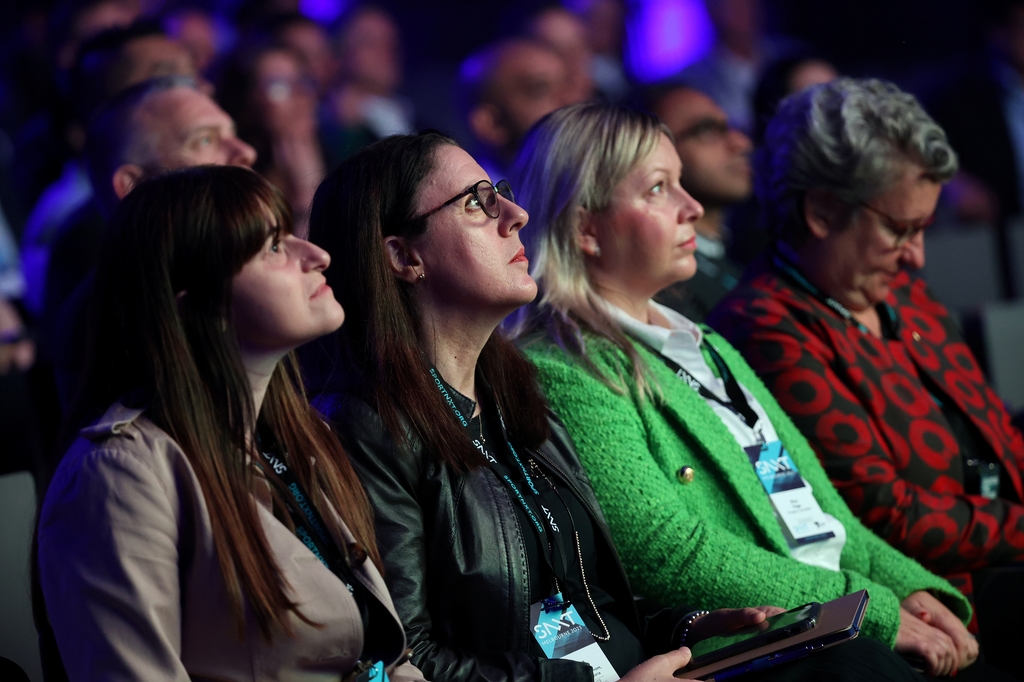
Goodell believes the NFL is currently covering the broadest range possible when it comes to broadcasting and sees meeting the audiences where they are as a priority.
Talking about pay-per-view for the Super Bowl, Goodell states that “maybe in the short term it could increase revenue, but we’re really looking at the long-term growth of our audience”
When it comes to connecting younger and older demographics, Goodell says young fans have higher standards of interactivity and engagement. He says fans are more often doing two or three things at one time while watching NFL.
“Through Thursday night football on Amazon, we decreased our average viewer age by eight to ten years.”
Talking the Superbowl, Goodell says a spike at halftime viewership carried onto to watch the second half of the game, and that people who tune in for halftime entertainment are more likely to consider being an NFL fan.
Goodell says people expect the NFL to lead and to have high standards in many important issues, from social to OH&S to business practices.
When it comes to NFL globalisation, the greater ability to go direct to consumers using technology is one of the reasons the game can expand to markets like Australia.
Goodell sees global development and access as crucial to creating good international talent pools, Australia is a focus for the NFL, with the athletic prowess and talent the NFL looks for.
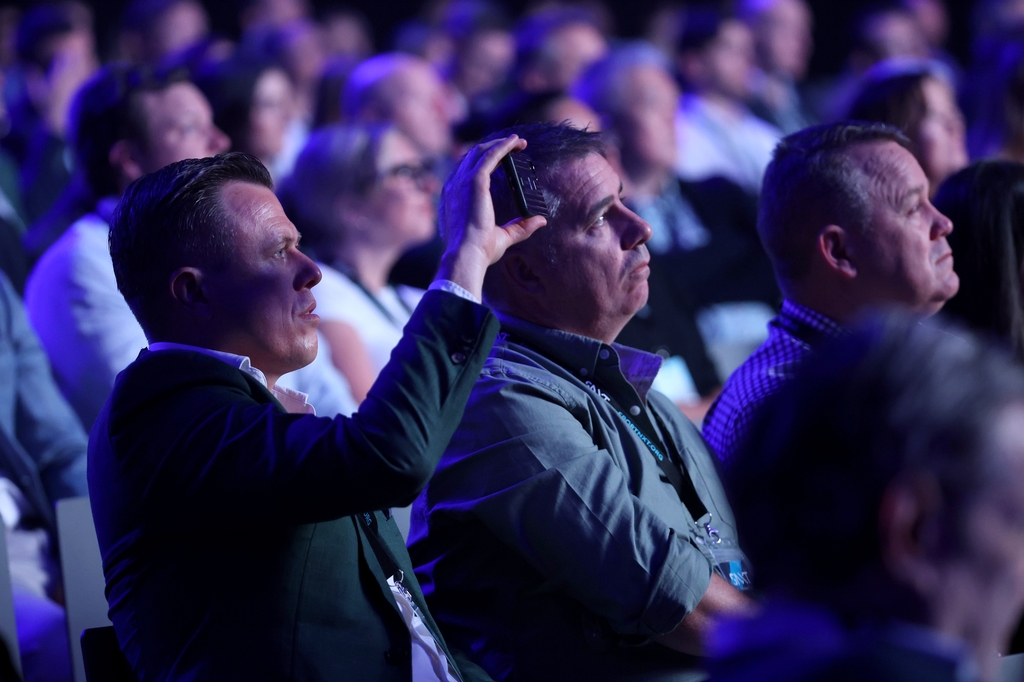
Goodell says opportunities offering ways to make successful careers is the key to keeping good talent. Such ways include: being a learning organisation, rewarding your employees, and valuing the people and the fans. Sports leagues have an ability to affect the world that in ways most companies don’t, so utilize it.
“When you set your mind on something and work together, it’s amazing what you can achieve.”
Goodell finishes by noting how much he gains from learning from leagues across the world, especially those whom the NFL has partnerships with in Australia.
Breakout Streams: Technology
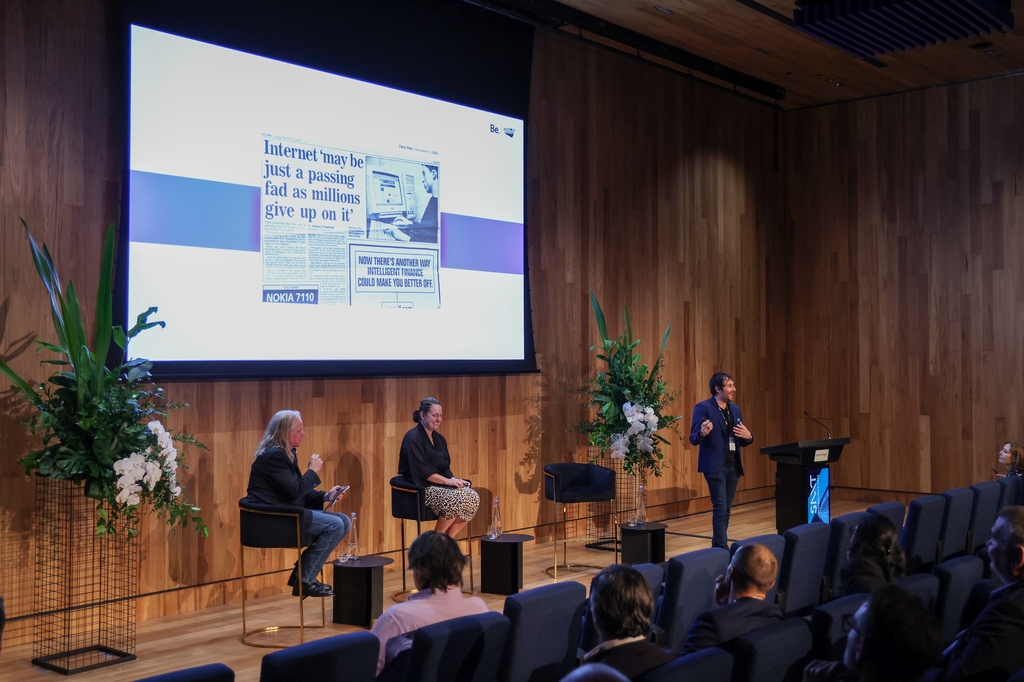
Peaks and Valleys
Scott Dinsdale (CEO, Be.) talks on the peaks and valley of technology in overall themes. “web 3 and AI will change the world over the next ten years. When you look at phones ten years ago some would say, “these are cute, but they won’t change the world”–but they have.”
Sarah Carney Green on AI:
Sarah Carney Green (CTO, Microsoft) focuses her talk on AI. Key takeaways include that this is the year of AI, AI can be wrong, it can be built and grow in a biased way, and finally AI is everywhere and in almost everyone’s lives–the only difference is how sophisticated it is and how you use it.
Carney Green recognises the key points where AI hits “human parity”, meaning it can replicate results equal or better than humans across tasks. Generative AI is an ability for AI to be creative and create new outcomes in imagery or language.
AI puts the power of the data you own into the hands of those who need it, says Carney Green.
“[AI] can listen to game commentaries and report on the game as it happens. That same AI can simultaneously tailor its language and focus to thousands of specific people.”
“We see that athletes can access self-service support on training and dietary requirements using AI.”
AI can create simulated twins, simulating the environment that people exist within so changes in environmental, medication, physical or really any factor can be changed and the results analysed in real time.
AI can also create connected ecosystems, allowing simultaneous experience bookings and collaborative work between businesses and services to tailor experiences to what people will desire.
Martin Beecroft on Web3 and the NFT Space:
“The truth of NFTs is it’s about rarity. The rarity is the bit to consider. You need to get to the core: who wants to invest in their fandom?”
The NFT is experiencing entries from large companies and seeing mass adoption from big tech and associated firms, according to Martin Beecroft.
“The AI addition to the web3 space is just going to make it grow quicker and faster, so it’s fundamental to understand how it all works.”
The evolution of blockchain use and wallets, according to Martin, is inevitable and here to stay.
The web3 environment facilitates people making money from the use of their own data. It gives rewards in return for the use of their data and allows for “sovereign data” owned by the user themselves who can choose to sell it on their own accord.
Everyone is still looking at the tech that they have instead of focusing on the user experience, the CIO of Be. says. This is an opportunity for disruption and a huge chance to rethink how revenue is generated and fans experience the sport.
“The future of collectibles is utility” says Martin, noting the history of NFTs existing as an isolated digital object as opposed to offering you something special to gain from ownership.
Martin says that as there are multiple blockchains, the ability to have “interoperable blockchains” that can transition is a big focus in the space….but the technology isn’t there yet. Picking a blockchain is important and a key factor to the decision is the reinvestment and development of the blockchain. Knowing that the future will be interoperable blockchains, your blockchain choice will likely matter less.
Dinsdale, Beecroft and Carney Green talk together:
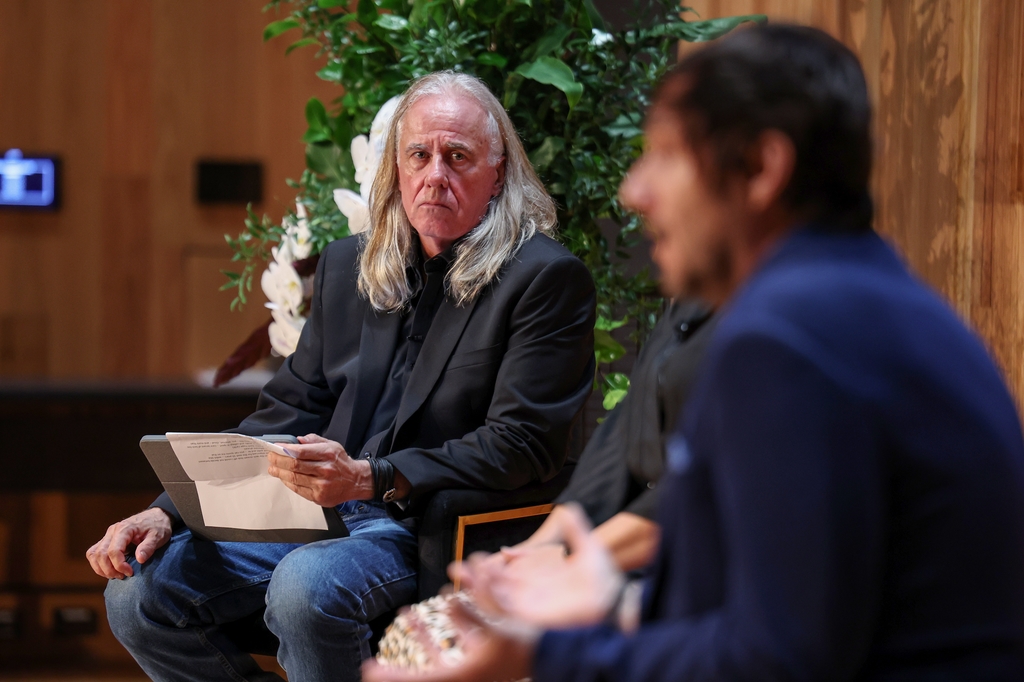
When asked whether AI should be closely limited or set somewhat free to experiment and iterate, Sarah says it is context-based. “I wouldn’t get AI to give medical advice as it can be wrong, but I would say it could look at your business data and gain insights from that”
Carney Green says marketing, content writing and business operations will be the most likely to be greatly assisted by AI use.
Within the web3 space, interaction with community and developing alongside your fans or customers is key yet underutilized.
Sarah says autonomous systems combined with AI can create humanoid interactions between AI and humans. However, there is also an increased risk of hacks and malicious digital activity driven by AI.
Partnering with Tech
Scott Dinsdale (Managing Director, FutureNext) says that although many companies want to work with sport, sports partnerships often face similar issues and successes. He is moderating a panel consisting of Ned Coten (CEO, EngageRM), Libby Owens (CEO, Champion Data) and Adrian Tobin (founder, Kinlab).
“Partnerships are about understanding and connecting around the shared ideas of like-minded people” said Adrian Tobin.
Libby Owens says partnerships require longevity and a commitment to listening and learning to ensure that the commercial and strategic successes that are being targeted will actually be achieved.
“Sport tends to be on the cutting edge. Without sport, I think much of the development in technology wouldn’t have happened in the way it happened.” Owens added.
Ned Coten says that there must be a level of personal and authentic relationships between the people within the businesses involved, and all members on the stage agree that the human element is essential. Having a personal and cultural fit can facilitate creating shared ambitions and successful outcomes.
A key to partnerships is getting out and building resilience as a group, agreeing that you will make mistakes and get things wrong sometimes but that you’ll do it as a group, says Tobin.
The Kinlab Founder says often Australians don’t often take ourselves seriously enough on the business side of sport and don’t have a tenacious enough approach to doing business. “Often in Australia our authenticity can overcome many sins on the business-side of things too.”
For sports with incredibly complex stakeholder networks, education to stakeholders should be a joint venture involving a technology partner to ensure all parties understand the timelines and goals of partnerships, says Owens.
“Delivering a partnership is about ensuring an understanding that you know what the outcomes are that can be delivered across an organisation, and how you maintain transparency if things go wrong,” says Ned Coten.
The attitude to improvement needs to be fast, incrementally improving and elevate the overall offering to fans, says Tobin.
Libby Owens believes Australia, when it comes to our field of play technologies, is one of the leading markets in the world with adaptive systems and industry leading strategies. It’s important to understand the nuance of what you want from a partnership as that will inform your approach, she says.
“A true partnership looks like less client, more partner. How do sports invest in small start ups to actually build something that creates value for the company?” Adrian Tobin
Businesses partnering with big companies in tech can still gain value, but they aren’t seen as big as there are far bigger industries that are prioritised above sports and entertainment–businesses which simply can’t compete on financial volume, says Dinsdale.
“Passion is sometimes to the detriment of partnerships, bringing it into the bad side of things. But it can also invigorate and bring in partners, not just technology, for all of us,” says Ned Coten.
Understanding what people’s passions are is important, but assuming people’s passions are the same as yours is a mistake, says Tobin. Tobin says while he doesn’t have much interest in cricket, his relationship with Cricket Australia is a great one as the passion for solving problems is what aligns Kinlab with Cricket Australia.
When asked what they would change if they could change one thing about the way sport approaches partnering:
Ned Coten says “this is a really important space, so taking it seriously and keeping that focus on it is critical.”
From Libby Owen’s perspective, “short-term ROI is important, everyone has a budget, but looking and understanding long-term ROI is where the real value for investment will be found.”
Tobin says “understanding your partner deeply”.
Tobin finishes by posing the question he often gives to execs in sport, what would their experience be like if they experienced what the general admission consumer has experienced, from parking their car, walking back from the game, and everything in-between.
Data: Unlimited Opportunities, Shifting Boundaries.
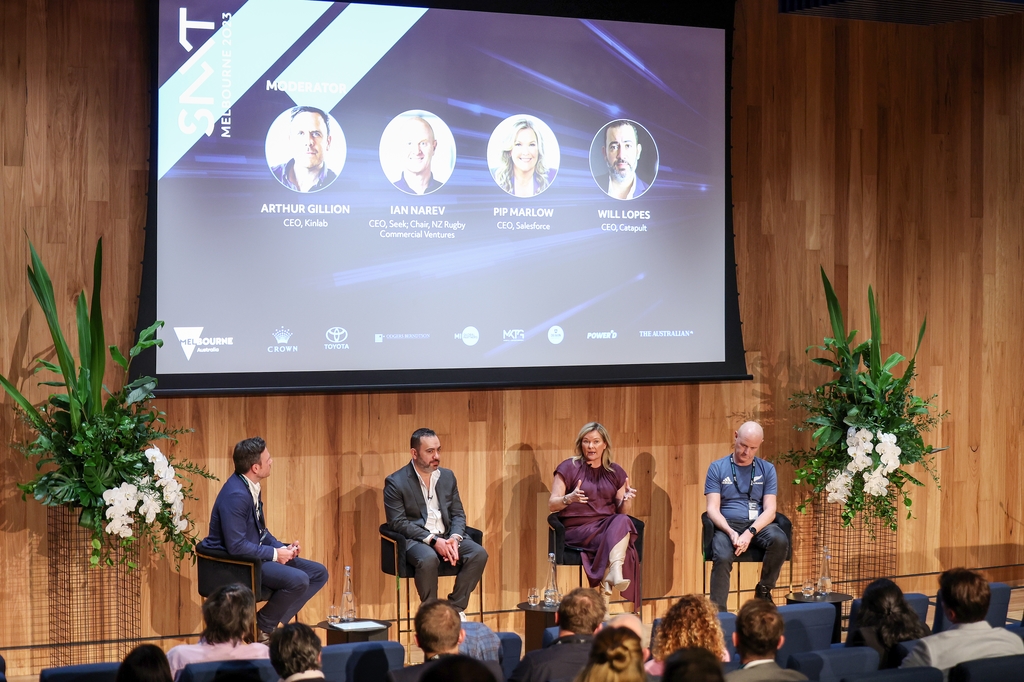
Businesses often report having large amounts of data that they struggle to utilise properly for actual return. However, some businesses use it really well, according to Pip Marlow, especially in the context of events like the F1 in Melbourne, where only one per cent of fans set foot at an actual race.
“Garbage in, garbage out.” If you are using data and only getting a singular perspective back, then you are not utilising it fully, according to Pip. Building data models to be inclusive is imperative–for example, ensuring that models do not prioritise male athletes in ranking datas etc. One such example Pip gives is how Cristiano Ronaldo is listed as the top goal scorer instead of the correct answer of Christine Sinclair.
Marlow says that AI should have key principles, it should be clear what work is AI generated, and it should cite its sources.
Will Lopes says data in sports is fairly new, mostly because it is actually quite hard to track and predict outcomes using data in sport. As time goes on, it is increasingly seeming possible to very accurately combine broad varieties of data to predict or even prescribe performance he said.
Lopes says its quite hard to know where to draw the line on data collection and that there are many considerations that aren’t even on the table yet, but will be important going forward. The core key is transparency: your doctor might use you vitals to help another patient as a internal case study, but if they went and sold your data to a big pharma company that doesn’t really fit a fair use.
Ian Narev says a huge problem is that “the reason machines can act like humans is because humans act like machines in the first place”. AI can perpetuate human prejudices based off past data and therefore not progress positive change.
Narev says data is incredibly important and touched on how it will align with or overtake the human creativity in business. He emphasises the value of maintaining the grassroots and club level traditions and not destroying that with the new world ideas, but also using the data to bring the people closer to the experience they want.
The Catapult CEO, when asked about any interesting data derived from insights they’ve found, speaks on the micro movements they found and analysed the far reaching effects they can have on athletes’ physiology and outcomes.
Marlow says the knowledge of data use and destruction is a crucial point to consider, especially in the context of cyber-attacks. For example, how long can, or should, you ethically hold data? Often customers with the most issues, from Marlow’s experience, have overly customised platforms. He recommends to keep it simple at first and go from there.
“Data is a means to an end, and scale is key to finding overall insights” says Lopes. Ian Narev agrees, going on to say a business needs to dig down to find the actual value from the data the business is trying to derive.
Data is a great tool and opportunity to allow for greater fan engagement and experiences, the speakers agree.
Pip Marlow says AI will allow for greater insights into the players experience and allow for advancements in health and safety for all participants.
Ian Narev predicts ownership perspectives on data will shift, with increasing denial from fans to give up their data for free.
Spoiled for Sport
Janet Whiting, Chair of Visit Victoria, opens by saying that Visit Victoria has an ever-increasing role in Victoria’s economy. “COVID turbo-charged the sector by creating more downtime for people, and what we found was more downtime equals more time for leisure activity.”
Whiting said Victoria continues to be a compelling story, historically and for the future. “The focus is on getting the right economic impact on behalf of the taxpayer. We don’t have a rock, a reef or a harbour. That’s why we have an events strategy. It’s not simply about a rightsholder running an event, it’s the city that’s hosting the event.”
She said more sophisticated rightsholders are seeking bespoke arrangements. “The 2026 Commonwealth Games is a good example of this. COVID allowed us to focus on regional Victoria as a hosting option, particularly for the less traditional and obvious tourist spots. It will turbo-charge housing supply and employment in those regions, and will drive a skills transfer into those areas.”
Visit Victoria CEO, Brendan McClements, says the conventional tick-the-box process for selecting major events opportunities merely produces a static and stilted outcome, as opposed to driving far more creative thinking. “Bespoke arrangements are a far better way to go. I don’t think there’s an event that’s come to Melbourne that hasn’t left stronger. We’re a state that helps build event brands for the long term.” Whiting adds that the emergence of private equity and venture capital into the major events space has introduced introduced new ways of thinking.
McClements is “super-confident” about the visitor economy for Victoria. “Australia is beautifully positioned for the rising middle class of South East Asia. The visitor economy is returning strongly. We went from $32b in December 2019, to a sharp drop in September 2016 to $26.5b, and now we’re targeting $35b by June 2024.”
“Victoria’s advantage is that we don’t have a set model or fixed parameters”, says McClements. “We genuinely look at every opportunity. The perfect event is one that reflects Melbourne and Victoria properly – one that tells the Melbourne story.
Expanding the core
David Stevenson, the AFL’s GM Operations, kicks off the session by speaking to the creation of the ‘Gather Round’ as “taking the Grand Final on the road”. “It’s about sponsors, broadcasters and ticketing partners working as one. In this case, we’ve partnered with the SA government to drive the right economic outcome, and we’ve already seen 56,000 of nearly 130,000 tickets sold so far to interstate fans.”
When it comes to international cricket, Stephanie Beltrame, EGM, Broadcast & Commercial for Cricket Australia, described India as “unique in the commercial ecosystem” in terms of the sheer scale it represents relative to the rest of the cricketing world. “Three of the top ten most populous countries are cricket-loving nations. That includes India and it means that we need to balance priorities in terms of how often we play in and against India versus playing at home and in other countries.”
PGA Australia chief, Gavin Kirkman, speaks about golf’s strategy of rebuilding and growing a sustainable domestic tour, including “developing pathways and showcasing our male and female players in Australia.” While unable to compete with local codes, Kirkman points to the opportunities that come from having 1.5 million Australians playing and engaging with golf in some form, and the opportunity it creates to grow the game’s audience by creating events for television.
Asked about where new audiences can come from, David Stevenson says the AFL looks at it through four lenses – age (kids), gender (women), geography, and ethnicity (via the Chinese and Indian diaspora).
Beltrame cites women’s participation as the biggest growth opportunity for Australian cricket. “The introduction of the women’s Indian Premier League will supercharge the game among women, and we’re focused on how we can encourage 5-12 year-old girls to become life-long fans and consumers of the game”. She says that the time will come when Australian cricket can commercialize women’s cricket as a standalone offering, a sentiment shared by the AFL’s Stevenson who called out the importance of getting AFLW on free-to-air TV as a driver of future growth.
Meanwhile, Kirkman, who describes golf as “one of the most fragmented sports in the world”, talks to the PGA’s work to build a website with Golf Australia as an important step in taking a more integrated approach to engaging local golf fans.
The Competitive Advantage of Purpose
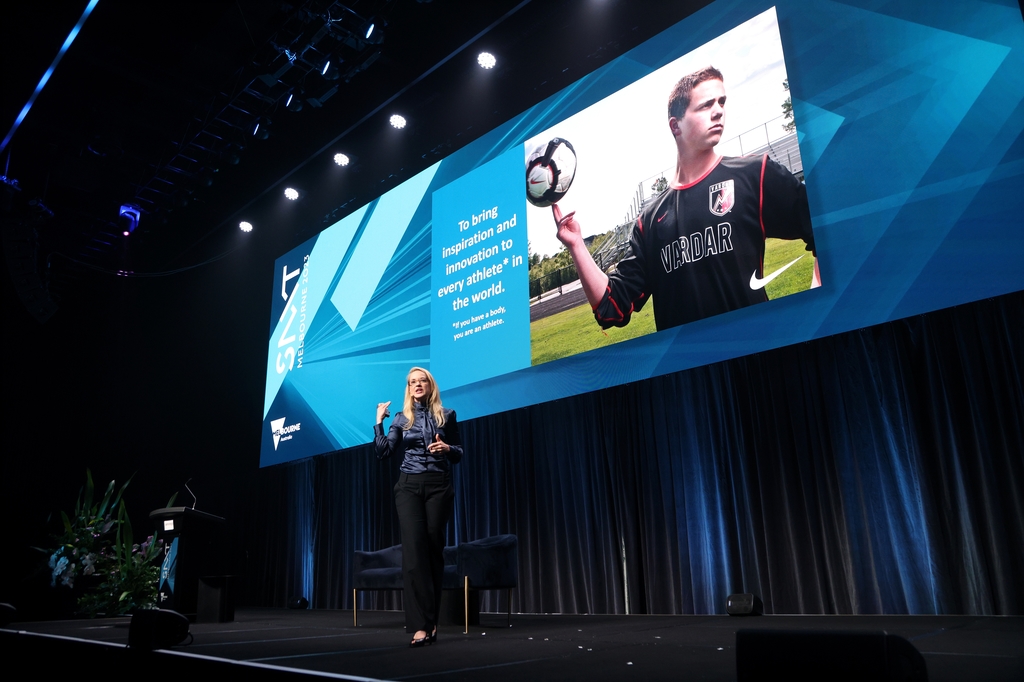
Lisa MacCallum, Founder and Chief Strategist at Inspired Companies, acknowledges the heightened skepticism of brands, business and government alongside the growing access to information and the challenge this poses to modern businesses.
The three major stake holders MacCallum focuses on are Customers, Employees and Outsiders (C.E.O), and their abilities to influence the companies for which they work for, buy from or none of the above.
The speed and scale of the influence from C.E.Os can be incredibly fast and discombobulating for a business and its leaders.
Using the examples of Nike and Google, MacCallum clarifies the importance of having a core idea to a business that can unify people to the brand. The core ideology and “clarity of their north star helps them make good decisions more often than bad ones, and keeps them on the right track.”
“Purpose Advantage manifests in both big and small ways, if you have a good one,” Lisa says.
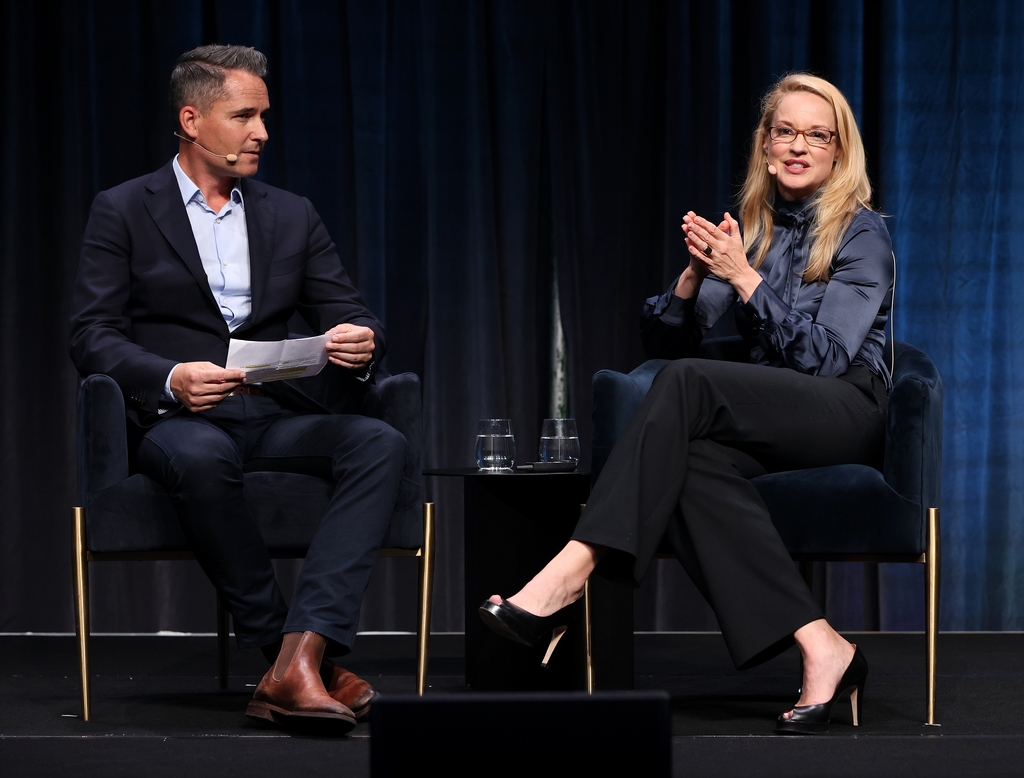
Troy De Haas, Head of APAC Sport & Entertainment at Odgers Berndston joined Lisa on stage to engage in conversation around this topic.
Purpose driven by a ‘why’, with a clear problem to solve and working to find the right problem will likely act as an effective guide.
What often happens time and time again is that money is invested into a purpose statement, but not into helping people understand it and follow it. The internal structures need to understand what the statement means on the inside and work to utilise it in the business, Lisa says. Implementing change management and following this purpose will help any business prosper
A well made purpose inspires new, important questions within businesses, the ex-Nike Vice President said.
“In a moment of crisis where you are the headline, you’ve screwed up, are your stakeholders coming to your defense? Are they giving you a chance to explain? If the answer is yes, then you are probably on the right track. If the answer is no–especially if there is internal anger–then the answer is probably no.” she said.
“If we’re going to nail this decade of green and gold, [we need] clarity in what our shared purpose and what our business purposes are.”
Capitalising Sport
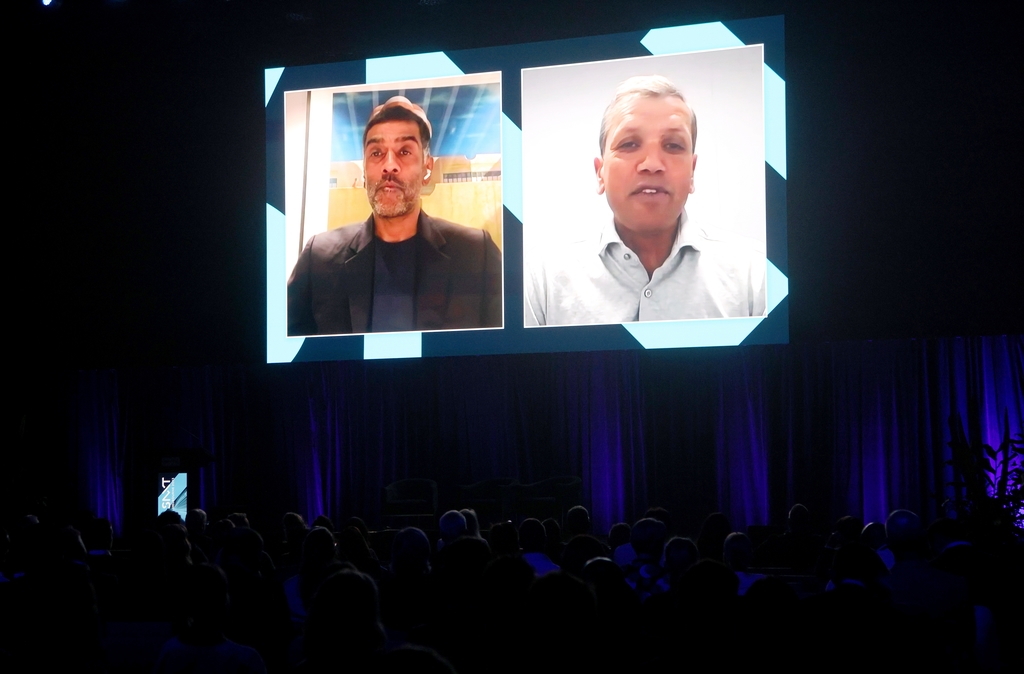
Manoj Badale, owner of the Rajasthan Royals says much of his success investing in sport is based off the same principles that served him in building technology businesses.
“There was this perception that sport was an investment for rich people, a trophy asset that you couldn’t make money off except by making money off the next guy who buys it off you.” As time went on, Manoj recognised that more sophisticated and high net-worth investors are getting involved in sporting investments, making use of good content and brand growth mindsets.
Manoj often sees a lot of hype around sport which seems to sometimes misinterpret either the asset of the industry they are in.
With public markets drying up, Badale thinks there will be an increase in long-term capital and funds with smarter and longer-term outlooks.
There are subtleties and nuances to the concept of “eyeball sports” according to Badale, who uses the example of his investment in the IPL being a deal that had a lot more to offer than purely the revenue side of it. He says that the connection and partnerships within that league are incredibly important players in the Indian and global leconomy.
“An eyeball back in the day was a TV. When we bought the IPL it was 98% TV revenue, but now it’s seen a massive rise in streaming and digital avenues.”
“I think for the 1.5 million netballers in Australia there are opportunities for streaming on the weekends and, as attention spans get smaller, this content in participation sports could become increasingly important.”
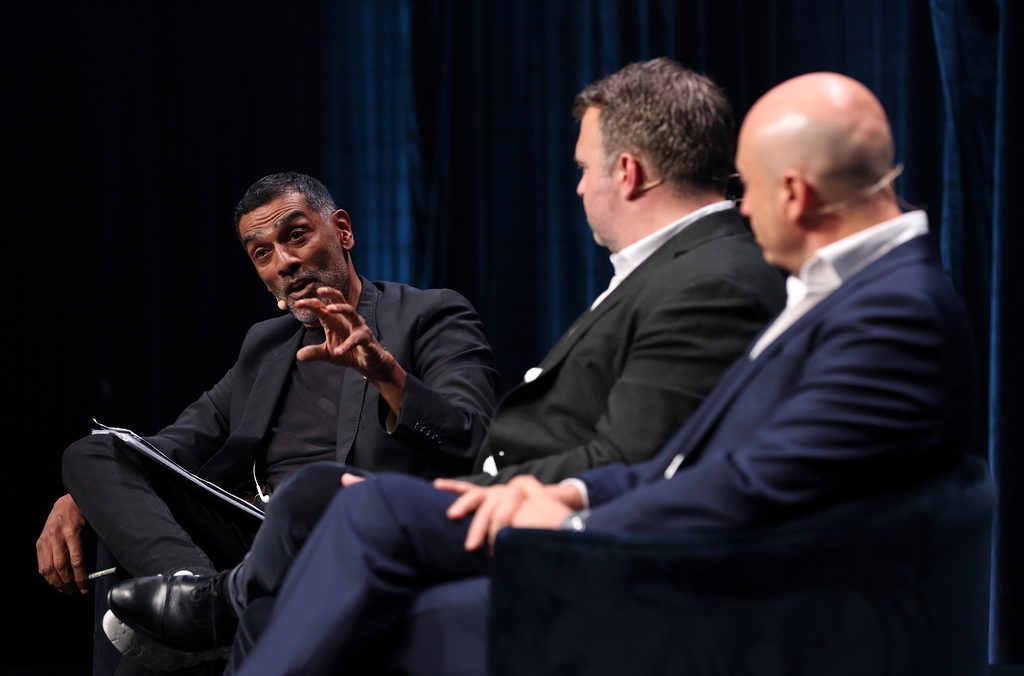
Ravi Krishnan (CEO at Stepathlon) is also onstage as well as Elis Jones (Managing Director at Goldman Sachs) and Larry Kestelman (Executive Chair at LK Group and NBL).
Larry Kestelman says it’s important with capital investments to consider the timing and look at the expertise and expectations of the company investing. Patient capital is important, but be careful what you enter in, says Larry, as some firms can come in and expect things that are outside the business plan to deliver.
Elis Jones says it’s important to understand what the non-cost benefits of engaging with investors can be and what the next steps are with different capital investments.
Kestelman says business is about people and putting them in the right place to succeed based on where they are in their careers and where can they contribute to common success.
The NBL owner puts large amounts of time into managing key people to ensure that they create the success that he wants to see across all his businesses, and sport is no different.
Jones acts as an advisor with a focus on sport at Goldman Sachs, and says that people need to embrace youth and see what remuneration can look like when experiencing success.
Ravi Krishnan says that while there are analogue employees, they are increasingly becoming digital. He recognizes the need to reflect the target demographics you are after within your business.
“In the last couple of years, everyone has recognized we are the second-best league in the world behind the NBA, and we have done that over eight years of consistent effort… The next stage is looking overseas” says Kestelman.
One of the critical questions of any investment is why do we do it like that? Often Jones has found the answer is that’s just how it’s done. It’s that openness to change that is key: Max Verstappen having 3.5 million people watch him do online racing is a great example of younger generations understanding the future.
“Being open to change and open to the way technology is embracing sport is key to growing and not being left behind.
The NBL has three strategies: what happens in Australia is controlled by us and we can make quick decisions and move forward.
“We currently have New Zealand in our league and we are lobbying aggressively to have teams play out of Asia. [We’re working on] how to attract more eyeballs out of the US.”
“Expansion is a good thing when done with thought leadership and not too quickly. Often people talk about the North American market… but we actually have lots of people directly above us who have a lot of interest,” says Jones in response to questions about expansion plan for a franchise like the NBL.
Keynote with Peggy O’Neal AO
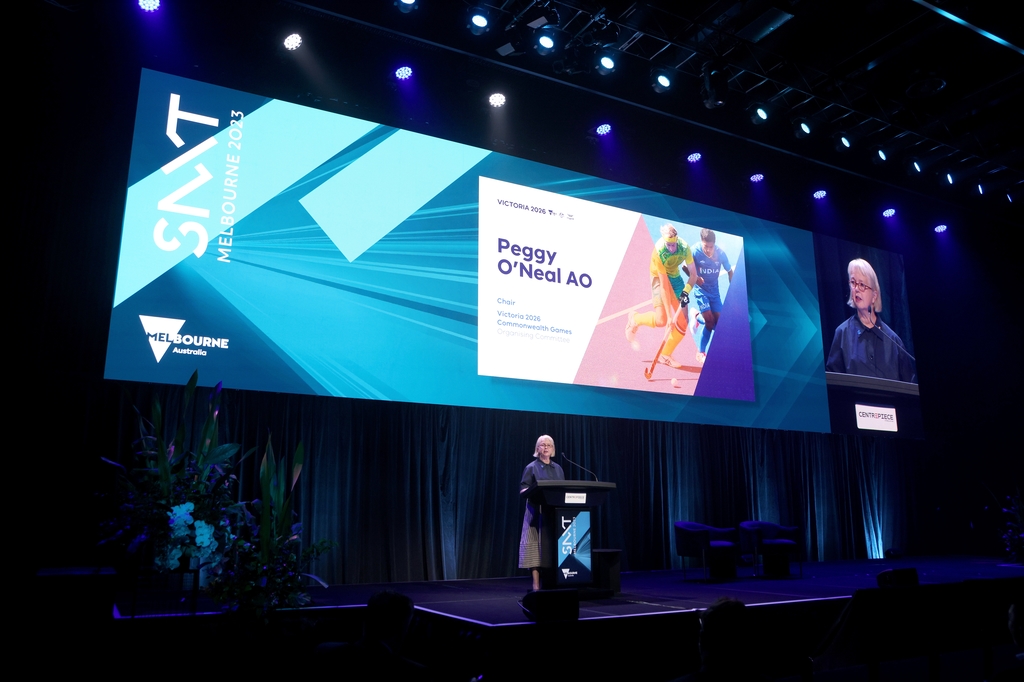
Peggy O’Neal reflects on her early life growing up in a coal mining town in West Virginia and how, through the sacrifice of her parents, Peggy and her sister were sent to boarding school and university. With women at the time often kept off the playing field, O’Neal became what she described as a “professional spectator”.
O’Neal details her core principles of leadership, and highlights the importance of listening to, and being connected to, your team. As she states, “you aren’t the leader you think you are if no one follows you.” The best leaders in the world know who they are and know who they are not.
Peggy asks the delegates to question who they identify as leaders and to ask if they will be good custodians and hold the standards high and best interest of our nation and its sporting dreams.
The opportunity for elite athletes to perform in Rural Victoria at the Commonwealth Games is a truly unique and great opportunity in Peggie’s perspective. These games will be the first hosted outside of a capital city.
The way the event is hosted shows that multidisciplinary competitions may have to look at more unique ways to host events, which can be a sportive opportunity and may allow for partial hosting for some Caribbean and African nations that otherwise may not have the opportunity to host.
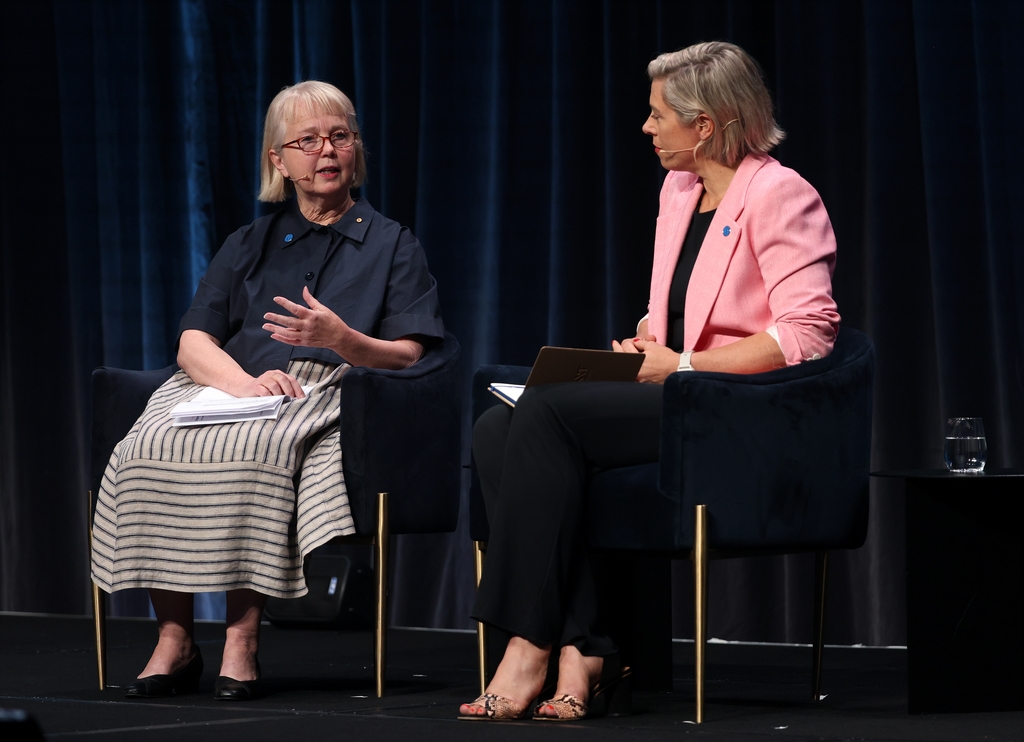
Peggy believes that Melbourne’s Commonwealth Games will lead as an example of what the commonwealth games can achieve going forwards.
For Peggy growing up, seeing the Olympics, commonwealth games, or even the NBA and NFL was little more than a dream growing up, something she and her parents never really had the practical resources for that to be a real opportunity.
The games will lead to a new aquatic centre in Geelong, an upgrade to eureka stadium lead to construction of social housing and stimulate local economies and inject both finances and interest in the areas and putting rural Victoria on the global radar.
Back to all Media
